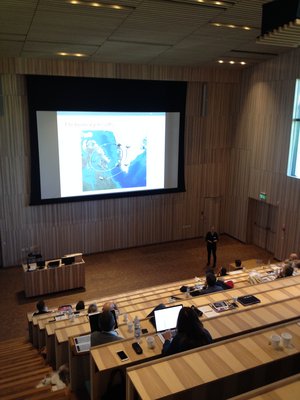
Aim of the symposium
There has been a longstanding attempt to make cross-cultural comparisons across the Circumpolar North. Close parallels, amounting almost to similarities in cultural identity, can be detected in the cosmologies of the various circumpolar peoples; for example, the respectful relationship to prey, the emphasis on the ritual treatment of bones, beliefs in rebirth of the soul/name, shamanic and subsistence practices. However, radical socio-economic differences are also apparent, with the egalitarian hunters and the hierarchical reindeer herders as the most evident distinction. Likewise, major differences exist in terms of ecology. Repeated attempts have been made to understand the tensions between cultural uniformity and diversity. However, polarized analytical models, emphasizing either generic adaptive or particularistic historical mechanisms, often mark such attempts.
Rather than polarizing ‘cultural history’ vs. ‘ecological adaptation’, and with a comparative perspective in view, this symposium encourages participants to explore interdisciplinary pathways to find new answers to old questions about the key drivers forging Arctic cultures. The aim is to improve our understanding of the mechanisms, natural and historical, behind the complex pattern of cultural similarities and differences between the indigenous peoples of this vast region, stretching from Scandinavian Lapland and Siberia over the American and Canadian Arctic to Greenland.
We invite contributors to present their papers and discuss new insights from anthropology, archaeology, biogeography, ecology and health. We particularly invite papers seeking to connect comparative data sets analytically and interpretatively.
The results of the symposium will be synthesized through the production of a high-level interdisciplinary journal special issue and an edited book volume. Three themes intended to guide this aim are described below (other themes may be introduced as long as they are comparative in scope).
a) Disequilibrium dynamics
Human persistence in arctic environments is often assumed to be at equilibrium with environmental conditions. Recent evidence from the biogeography of animals and plants suggests that arctic species distributions are not in equilibrium with their climatic niche. This implies that species distributions will not necessarily change in accordance with climate change. Can a similar disequilibrium with regard to human cultures be detected? If so could it be that human adaptations in the circumpolar region really are the results of a disjointed relationship between cultural patterns and environmental forces?
b) Arctic resource strategies: adaptive and cosmological mechanisms.
The image of indigenous hunters as ‘ecologists’, whose spiritually informed hunting practices are comparable to resource management and conservation ethics, is deeply embedded in Western and modern-day indigenous political thinking. However, this image has been challenged as it has been shown how Arctic hunters, since the time of the extinction of the mega fauna, overkill game recourses to maximize surplus food reserves, occasionally with devastating consequences for human and animal sustainability. It has been suggested that reasons behind this merciless killing may lie in peoples’ traditional subsistence cosmologies. Are indigenous hunters ‘aggressive resource users’ killing indiscriminately, or are they ‘ecological saints’, killing only what they need for survival? A move towards a more nuanced understanding of indigenous conceptions of their environments and hunting ethics is needed. Additionally we may ask whether a historical change with regard to hunters’ attitudes towards prey can be detected, such as when they shifted to new modes of production, including fur trapping (market economy) and reindeer herding (delayed return systems), or when they took on new technologies, such as guns and snowmobiles?
c) Arctic cultures: health and wellbeing
Stress can increase vulnerability to a range of diseases and predict maladaptive behaviour patterns, such as alcoholism or violence. In the Arctic the absence of or breakdown of social relationships, has been shown to inflict significant damage on mental health, leading to suicide and homicide, for example. Here we aim to not only identify the key socio-ecological stressors that Arctic cultures are facing, but also to examine their relationship to health, mortality and social patterns by integrating evidence from across the circumpolar region. We may ask, for example, what role has stressors played in the cultural transformations in pre-history and history within the region? In addition, which socio-ecological stressors are influencing rapid increases in so called ‘western lifestyle diseases’, such as diabetes or the high incidence of suicide and violent death in Arctic populations?
Organizers from Arctic Research Center, Aarhus University
Prof. Rane Willerslev
Assist. prof. Pelle Tejsner
Senior scientist, Toke T. Høye
Ass. prof. Felix Riede
Dr Djuke Veldhuis